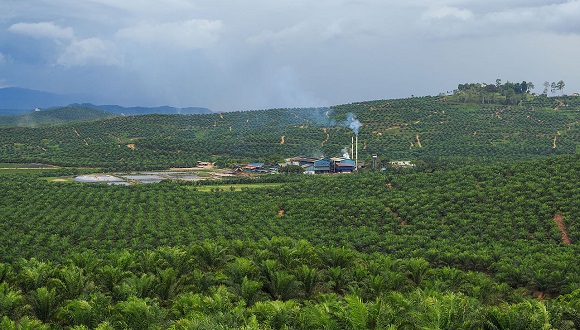Russian Revolution and environment
We commemorate the 100th anniversary of the October Revolution led by Lenin and the Bolsheviks. What was the scientific and environmental policy followed by the USSR from then until 1989, the year of its dissolution?

It is a century now, in October 2017, of the Russian Revolution and the establishment of the Soviet regime, which lasted until 1989, 72 years. The destruction of the USSR was caused by a combination of factors: the chronic productive incapacity of the Soviet system, the internal tensions of the Empire, the power of a triumphant neoliberalism in the United States with Ronald Reagan and the United Kingdom with Margaret Thatcher, the Polish revolt with a strong influence of the Catholic Church and, in particular of John Paul II, etc. The 1917 Revolution was one of the capital facts of the twentieth century. The first rehearsal of a communist state in an empire as immense as the Russian immediately became a model, for some of the way to go and for others of that in which not to fall. Until 1989, the USSR was the counterweight to capitalist systems. But I do not pretend here to play the historian. I want just to comment on the attitude of the Soviet alternative model in relation to environmental issues and science in general
Something we have in common the vast majority of humans with the revolutionaries of 1917: the idea that it is not good to leave too much power in very few hands and free of any control.
The USSR made very important efforts in some fields of science and technology, largely linked to the arms race and the conquest of space, and attain important progress, especially in Physics and Mathematics among the basic sciences. The Lysenko affair was very negative for the image of Soviet science. This agronomist promised to propel agricultural production on the basis of Lamarckian ideas. The fact that Stalin, a man without a scientific background, was an admirer of Lamarck and also needed an urgent change in agriculture led to the rise of Lysenko to the head of the Academy of Sciences, the subsequent depuration and deportation (from 1935) of geneticists with solid academic background and even the murder of the most prominent, Nikolai Vavilov. The lysenkoism lasted from 1929 to the 60s and was a favorite subject of the campaigns from the West against the Soviet system.
The ideological prejudices (which are not exclusive to the USSR) were not the only flaws in the applications of Soviet science. A very serious problem was the centralization of decisions, taken by bureaucrats in Moscow or other capitals, often over huge territories. To reinvigorate the countryside, destroyed by war and mismanagement, introductions of exotic species, such as African antelopes or kangaroos, were tried with considerable failures.

The most known disaster, however, was the diversion of flows from the Amu Daria and Sir Daria rivers to irrigate large tracts of cotton cultivation in Uzbekistan and Kazakhstan. These rivers fed the 68,000 km2 of the immense endorheic lake known as the Sea of Aral. When losing these contributions, the Aral was reduced to a tenth of its initial size. The fishing industry was annihilated, the fertilizers and pesticides that had been deposited in the bed of the lake, once it was largely dry, were wind-scattered around. This caused diseases, fetal deformations and other serious health complications.
Centralism in decision-making on interventions in large territories involves very serious risks.
In general, much money was spent for irrigation in often misconceived projects that caused ecological damage. Problems with industrial pollution were significant (e.g., poisoning of a thousand people by an albumin factory in Agarsk). The USSR also suffered two very serious nuclear accidents, the one in 1957 in Kasli (in the Urals), with more than one thousand dead and 15,000 km2 affected, and that of 1986 in Chernobyl, now in Ukraine, with an area called of alienation of 30 km around the plant and with effects on thousands of people’s health that have never been fully evaluated. Chernobyl has been the most important nuclear accident in history along with that of Fukushima in Japan in 2011. Last year a new large sarcophagus was completed to cover the fusion reactor that is expected to last a century.
It is nevertheless true that major nuclear accidents have occurred also in other places, and the same occurs with problems due to industrial pollution. Soviet secrecy, on the one hand, and the very active anti-Soviet propaganda by the USA on the other, make it very difficult to reach an objective balance of the environmental question in the USSR, which, in any case, cannot be good, as it is also the case in China, with terrible erosion and pollution problems.

Palm oil is already the most demanded in the world, despite of its quality as food is much lower than olive oil, which demand is still small on a global scale. The Chinese-Indonesian company Sinar Mas raks the second position in the world in this business. This company has made a joint venture with de Spanish oil-company CEPSA, which this year opened a vegetable alcohol plant in Indonesia, with an investment of 300 million euros in the last two years.
Centralism in decision-making on interventions in large territories involves very serious risks. However, it must also be said that the regime of oligopolies with global powers that exists now on a global scale has the double risk that decisions are taken from afar on often remote (for us) territories whereas, in addition, the promoters don’t care if they leave them exhausted, and that the goal is not to improve production but to increase business profits. The case of palm oil can be a very good example (see the splendid article by Ramon Folch in the latest issue of Sostenible:http://sostenible.cat/opinio/portar-se-loli).
A hundred years have passed since a time that was of hope for the poor and humiliated of the earth. A century full of wars and genocides, economic, ecological and social disasters and also spectacular progress in these same fields and in science and technology, after which we have, more than ever, the urgency to face important uncertainties. Perhaps the greatest is whether the improvement of living conditions for a growing population will not be in exchange for passing thresholds that finally lead to the collapse of essential processes in life support systems. The future cannot be predicted, but it is prudent to learn from past and present errors.
Something we have in common the vast majority of humans with the revolutionaries of 1917: the idea that it is not good to leave too much power in very few hands and free of any control.







